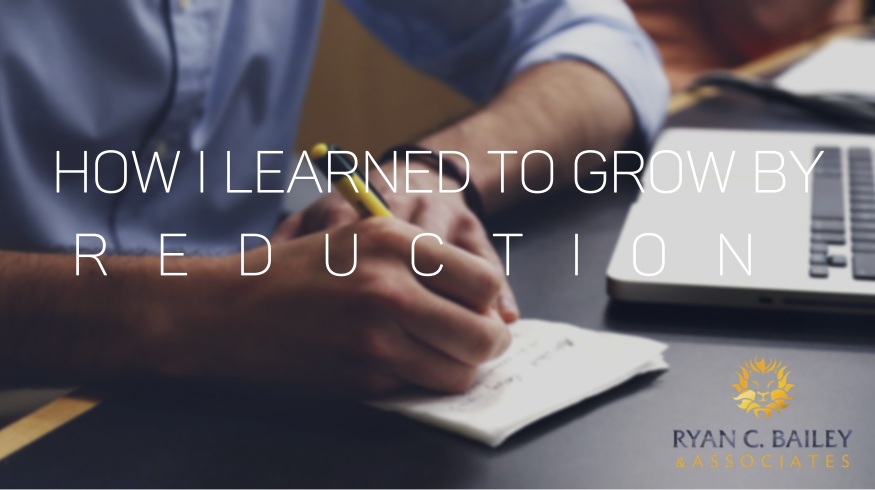I just read this article. It shows how top CEOs are replacing the phrase work-life balance with work-life harmony. The idea is not to think about compartmentalizing the work you do and the way you relax. You don’t have to trade one for the other. Instead, think about how to fill your life with meaning, and you will find both your professional and personal life becoming highly energizing. Moreover, you will find that they feed each other and make your life more satisfying.
So how do you go about doing that? Here are a few steps to help you get started:
Make a List of What’s Meaningful to You
So what’s meaningful to you? Really think about that. We have a finite amount of time here on Earth, and we had better make the most of it.
Make a list of the things that bring meaning to your life. What do you love to do? What brings you joy?
It may help you to think about times in your life when you were doing things you absolutely loved. When were you cracking up like crazy? When were you your most creative? When were you the most you, you could be? What was the most fun time you’ve ever had? When have you felt passion? How about joy? How about love? At the core, what was it about those experiences that brought you meaning? These are the things you want to invest in.
Harmonize Passions To Avoid Burn Out
We also have to be careful. Those of us who have found our passions can get burned out by them. We need to harmonize our passions so that not one of them leads us to burnout. We can do that by allowing ourselves to be fully present in whatever it is we are doing at the moment so we can give it all we have. So when you are at work, be all in. When you’re at home, be all in. When sleeping, exercising, or resting, be all in. We function best when we give ourselves to what we are doing for the sake of the activity itself, not for some self-glorifying end. But don’t burn out on any one of them.
Do What You Were Made To Do
So now think. Do you know what you were built to do? Just knowing that will bring incredible meaning to your life. Our coaches can help you discover that in less than 6 hours. It is by far our most popular coaching program. There are plenty of other resources and books that can help you discover that as well. Be sure to get clear on what that is.
Focus on the Most Essential Part of What You Were Made To Do
Once you discover what you were built to do, read the book Essentialism, by Greg McKeown. It will show you how to focus on the most important part of your work and go all in there. You will feel like you are in your strike zone throughout the day.
Be Fully Present With Those You Care About
Outside of work, meaning can come by being fully present with those you care for.
My twin boys turn 15 in less than a month. FIFTEEN! My wife and I are talking about what car to get them. How did we get here so quickly? Wasn’t it just yesterday that I was holding them like this?
As much as I loved the time when they were small, I am now loving to see them become men. The conversations, the joking around, the stretching them to help them discover who they are has been incredible. I’ve only got four more years with them here at home. I want to make the most of it. How about you? How can you bring meaning to the relationships you have?
To Have Sustained Meaningful Experiences, Embrace Self-Care
In order for me to give myself to the things that are meaningful, I need to take care of myself.
Sleep has been shown to be the top productivity tool. A few years ago when I struggled with sleep, I wrote this article. Prioritizing sleep has been life-changing. I am also working on my diet and exercise. I have yo-yo’d in my weight a lot over the last 20 years, but I am learning to pursue self-care with meaning. A question I’ve been reflecting on is, “How does taking care of myself bring meaning to me and to others?” I am discovering a consistency that I have not had before. Try it, and let me know how it goes.
Be Grateful. Don’t Take Anything for Granted.
Another self-care tool that has been incredibly valuable is expressing gratitude. When we are grateful, it lifts us out of the low energy spaces and reminds us that although we are not entitled to anything, we have - and are given - incredible gifts. The very means by which you are reading this blog is just one of many things you have to be grateful for. Don’t take any of it for granted. (For more on gratitude: see here or here.)
Remember: Wasting Time Sucks Your Energy
How do you waste time? How can you replace that time with something meaningful? Sometimes my brain needs to veg out. Replacing wasted time with brain games has not only been fun, but has given my wife, twin boys, daughter, and me something we can all get into. When I used to waste time, my energy level would drop. When I play brain games, my brain gets sharper, and when my family gets into it with me, it provides even more fun and closeness.
Join Me In A Different Kind of New Year’s Resolution
We are about to start a new year. Many of us will be thinking about what we want to go in for. A common resolution is to develop a work-life balance. Maybe this time around we can build a work-life harmony. Would you join me in this resolution? To fill this next year with as much meaning as you can get?
Chew On This:
How will you fill your life with as much meaning as you can get?






